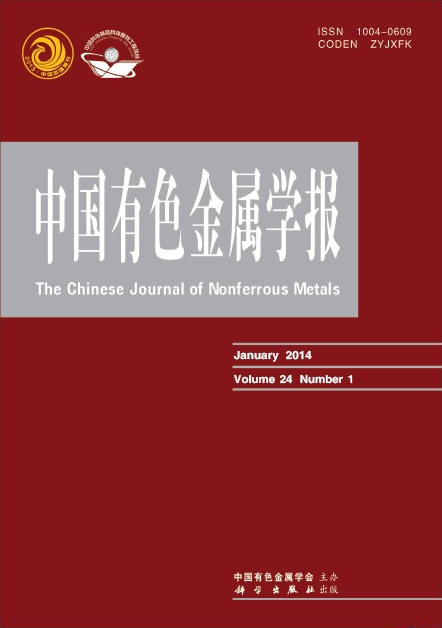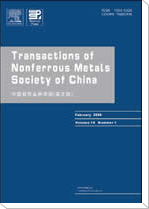中国有色金属学报(英文版)
Transactions of Nonferrous Metals Society of China
| Vol. 35 No. 8 August 2025 |
(School of Metallurgy and Environment, Central South University, Changsha 410083, China)
Abstract:High-purity AlF3 was prepared by the combined process of leaching the raw material of waste aluminum electrolytes with aluminum chloride, electrolyzing the leaching solution, and then mixing with ammonium hydrogen fluoride for roasting. Under the optimal leaching conditions of a fluorine to aluminum molar ratio of 2.0, a liquid-to-solid ratio of 12, a temperature of 90 °C, and time of 4 h, the fluorine leaching rate can reach 99.15%. Under the action of electrolysis, the H+ is reduced to H2 in the cathode, while the remaining OH- combines with AlF2+ and AlF2+ to precipitate aluminium hydroxyfluoride hydrate. The results show that electrolysis is beneficial to reduce the impurity content of aluminium hydroxyfluoride hydrate. When the current density is 0.2 A/cm2, the temperature is 90 °C, the stirring speed is 200 r/min, and the electrolysis endpoint pH is 3.0, the total content of Na, K and Ca impurities in the precipitation is only 0.64 wt.%. Moreover, the hydrolysis can be inhibited effectively by adding ammonium hydrogen fluoride in the mixed-roasting process. When the mass ratio of aluminium hydroxyfluoride hydrate to ammonium hydrogen fluoride is 2?1, the purity of the AlF3 product is even 99.51 wt.%. Conducively, the high-purity AlF3 can be returned to the aluminum electrolysis industry or used as a reagent.
Key words: waste aluminum electrolyte; aluminum chloride solution; electrolysis; aluminium hydroxyfluoride hydrate; ammonium hydrogen fluoride; anhydrous aluminum fluoride


